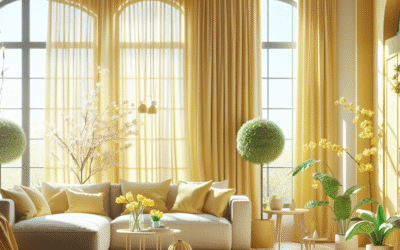
Are you looking to create a serene and functional living space? Japandi minimalist style might be just what you need. By merging the elegance of Japanese design with the cozy aspects of Scandinavian aesthetics, Japandi transforms interiors into peaceful havens. This article will delve into the principles of Japandi, the key elements to incorporate, and how to achieve this beautiful aesthetic in your modern home.
Throughout this guide, you’ll learn about color palettes, furniture selection, and layout strategies to master the Japandi style. Ready to embark on this design journey? Let’s explore the harmonious world of Japandi minimalism!
Understanding Japandi Minimalist Style
Japandi is more than just a design trend; it’s a philosophy that emphasizes simplicity and functionality. This style beautifully marries Japanese minimalism, characterized by clean lines and natural materials, with the warm, inviting feel of Scandinavian design.
The History of Japandi Style
This aesthetic emerged from the increasing interest in minimalist living and a collective desire for functionality without sacrificing beauty. As more people globally embrace sustainable living, Japandi has become a sought-after style.
Core Principles of Japandi
- Simplicity: Every element should serve a purpose.
- Functionality: Furniture should be both beautiful and practical.
- Natural Materials: Use wood, bamboo, ceramics, and other organic materials.
- Neutral Color Palettes: Focus on earthy tones and pastels.
Key Elements of Japandi Design
Color Palettes
Japandi style favors muted, calming colors. Soft whites, warm beiges, and gentle greens or blues help create an atmosphere of tranquility.
Furniture Selection
Choose furniture with clean lines and simple shapes. Consider items made from natural materials like wood or rattan to bring warmth and texture into your space.
Textures and Fabrics
Incorporating textures such as linen or wool can soften a space, adding depth without overwhelming the minimalist approach.
Implementing Japandi Style in Your Home
Living Room Design
Start with a neutral base for your living room. Incorporate low-profile furniture and emphasize open space. Add a few statement plants for a touch of nature.
Bedroom Oasis
Create a calming retreat with soft linens and wood accents. Use sliding doors or screens to maintain an organized feel while allowing natural light.
Benefits of Japandi Minimalist Style
Adopting the Japandi aesthetic can lead to numerous benefits, including:
- Increased space perception and functionality.
- Reduced stress through simplified surroundings.
- Enhanced personal well-being by promoting harmony.
Case Studies and Examples
Real-World Applications
Several homes have successfully integrated Japandi style. One notable example is a compact urban apartment that utilized sliding partitions for space flexibility while keeping the decor minimalistic and cozy.
Frequently Asked Questions
What is the difference between Japanese and Scandinavian design?
Japanese design often emphasizes minimalist aesthetics and nature-integrated space, while Scandinavian design prioritizes functionality and warmth, often incorporating brighter colors and playful accents.
Can Japandi style work in small spaces?
Absolutely! Japandi principles are well-suited for small spaces as they emphasize functionality, which helps maximize the utility of every square foot.
Content Disclaimer
The information provided in this article is for educational purposes only and does not constitute professional advice. Always consult with a qualified designer or architect for personalized recommendations.
Categories
- Accent Walls & Ceilings (61)
- Art Curation & Gallery (62)
- Bedding Style Trends (68)
- Bedroom Makeover (81)
- Bohemian & Eclectic Styles (58)
- DIY & Budget-Friendly Decor (64)
- Eco-Friendly Design (62)
- Furniture Care (71)
- Home Decor & Design Ideas (162)
- Home Wellness Spaces (59)
- Integrated Outdoor Living (67)
- Japandi Style (61)
- Kids and Nursery Decor (59)
- Living Room Decor (79)
- Mix & Match Techniques (73)
- Modern & Contemporary Design (66)
- Rug Sizing & Placement (73)
- Scandinavian Design Inspiration (20)
- Seasonal Home Decor (79)
- Small Space Solutions (73)
- Wall Art & Painting Tips (77)
Recent Comments
Archives
Product Gallery
-
Large Area Green Rugs for Bedroom Nordic Living Room Decoration Shaped Carpet Irregular Plush Lounge Rug Home Thick Washable Mat
Rated 5.00 out of 5$36.00 – $225.00Price range: $36.00 through $225.00 -
Nordic Style Rugs for Bedroom Morandi Living Room Decoration Carpet Large Area Geometry Lounge Rug Home Cloakroom Non-slip Mat
Rated 5.00 out of 5$26.00 – $387.00Price range: $26.00 through $387.00 -
Irregular Shapes Living Room Decoration Carpet Modern Style Rugs for Bedroom Home Thicken Plush Rug Fluffy Soft Lounge Floor Mat
Rated 4.83 out of 5$37.00 – $225.00Price range: $37.00 through $225.00














